כרכום חורפי ,زعفران
| Scientific name: | Crocus hyemalis Boiss. et Blanche | |
| Common name: | Winter Crocus | |
| Hebrew name: | כרכום חורפי | |
| Arabic name: | زعفران | |
| Family: | Iridaceae, אירוסיים |
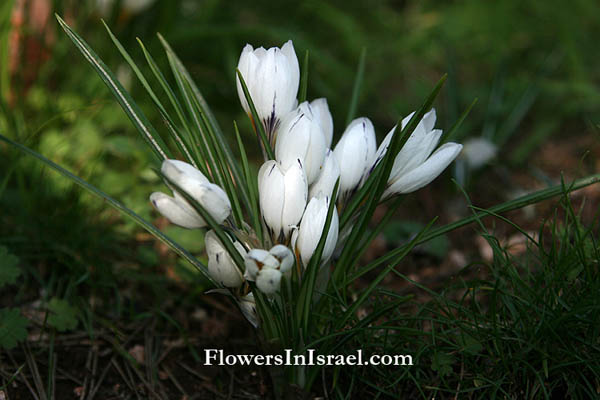
Location: Carmel, Muhraka |
| Life form: | Geophyte, tunic membranous corms | |
| Stems: | 4-8 cm high | |
| Leaves: | All basal, rosette, narrow ensiform leaf with a white central stripe along the leaf axis, margin entire | |
| Inflorescence: | Solitary | |
| Flowers: | White, yellow perianth throat and honey sent smell flowers, 3 black stamens, dark purple anthers, style clearly 3-branched; ovary subterranean | |
| Fruits / pods: | Capsule, numerous seeds; white seed color | |
| Flowering Period: | January, February, November, December | |
| Habitat: | Batha, Phrygana | |
| Distribution: | Mediterranean Woodlands and Shrublands, Semi-steppe shrublands | |
| Chorotype: | Mediterranean | |
| Summer shedding: | Ephemeral |
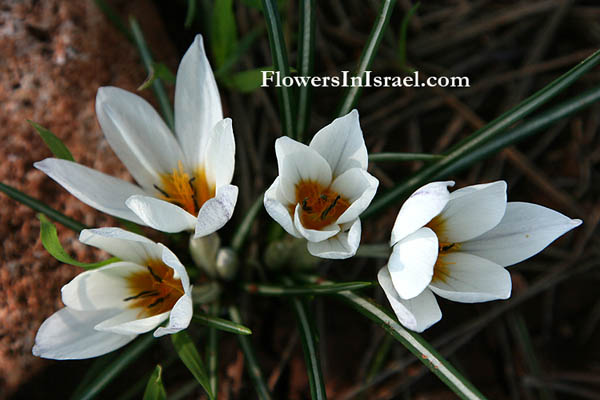
Location: Carmel, Muhraka Derivation of the botanical name: Crocus, Greek κρόκος, krokos "thread" and alludes to the stigmas, In Hebrew it is called: karkom (כרכום), Aramaic kurkama (כרכמא), Persian and Arabic kurkum, all meaning saffron or saffron yellow. In Talmudic Hebrew, the verb כרכם meant "to be come yellow". hyemalis, of winter, wintry.
The spice saffron is obtained from the stigmas of Crocus sativus, an autumn/fall-blooming species. Safflower flowers (Carthamus tinctorius) are falsely sold as saffron. Not everyone agrees that the karkom should be identified as saffron, i.e. Crocus sativus., but say that karkom was Curcuma longa - better known as turmeric. Saffron and turmeric are not closely related botanically (turmeric is actually a kind of ginger), but they are both used to create a yellow color (both for food and as a dye). Saffron is actually the most expensive spice in the world, but turmeric is used as a cheaper substitute. So it is possible, that karkom in whatever original language simply meant "yellow". From there it became "crocus" and "curcuma". In Modern Hebrew we find both saffron and turmeric with almost the same spelling. Karkom is crocus, and also saffron, although ze'afran זעפרן is more commonly used. Ze'afran is borrowed from the Arabic (as is the English word "saffron"), where it apparently is related to the word asfar - "yellow" (the plant safflower - another saffron substitute - also got its name from this Arabic root). Saffron was grown from the 7th century in China, 10th in the Arab lands and Spain, and 11th in France and Germany. It was prized in England by the fourteenth century. It takes 20,000 stamen from the crocus to produce 125g (4 oz) of saffron. Pliny reports that the benches and floors in public theaters were strewn with saffron, and the petals placed in small fountains to disperse the scent in large halls. "With this the son of Saturn caught his wife in his embrace;
whereon the earth sprouted them a cushion of young grass, with dew-bespangled lotus, crocus, and hyacinth, so soft and thick that it raised them well above the ground. Here they laid themselves down and overhead they were covered by a fair cloud of gold, from which there fell glittering dew-drops." Homer's Iliad, Book XIV, verse 347 Bible resources:
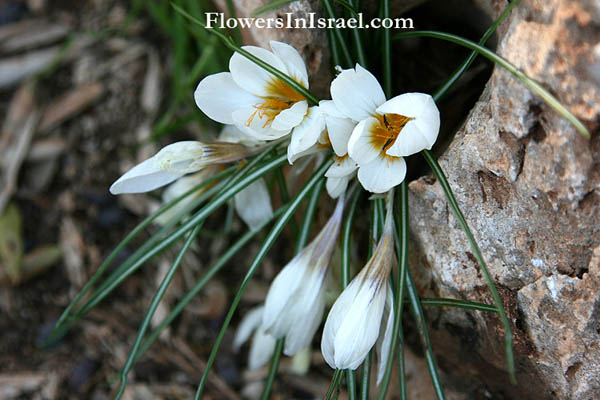
Location: Carmel, Muhraka 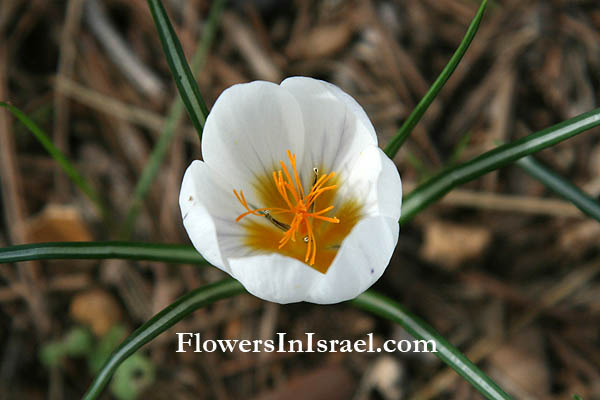
Location: Mount Tabor 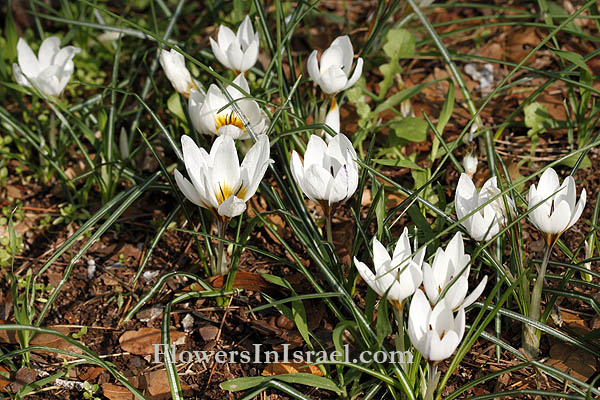
Location: Carmel, Muhraka 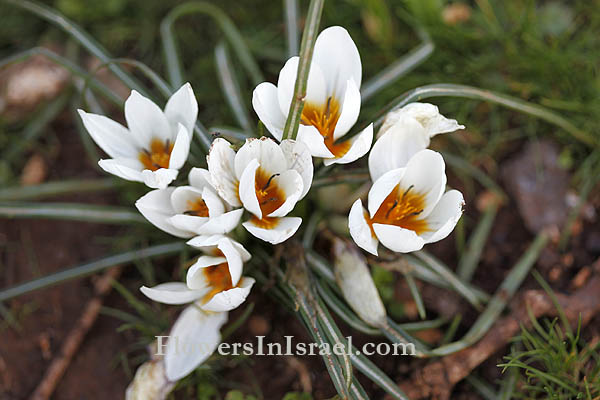
Location: Carmel, Muhraka |